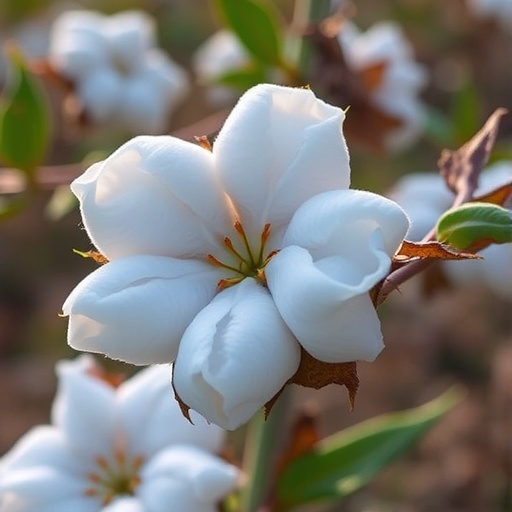
In the realm of cellular biology, oxidative stress is becoming increasingly recognized for its implications in various ocular diseases, particularly diseases affecting the retinal pigment epithelium (RPE). A novel exploration by researchers Ding, Dong, and Wei has shed light on how Erzhi Pillsâa traditional Chinese herbal formulationâappear to exert protective effects against hydrogen peroxide (HâOâ)-induced oxidative stress, inflammation, and angiogenesis in ARPE-19 cells, a cell line representative of the human RPE. Such insights could pave the way for innovative therapeutic strategies in the management of retinal disorders.
Oxidative stress, characterized by an imbalance between reactive oxygen species (ROS) production and the body’s ability to detoxify these harmful components, has long been associated with cellular dysfunction and inflammation. In the context of retinal health, the RPE cells play a crucial role in maintaining homeostasis and visual function. However, exposure to stressors such as HâOâ can exacerbate oxidative damage and initiate a cascade of inflammatory events that compromise cell integrity. Understanding the protective mechanisms of Erzhi Pills could provide significant insights into potential interventions against this stress-induced cellular decline.
The concept of using herbal medicine for ocular health isn’t new, but the scientific rigor with which the researchers accessed Erzhi Pills offers a compelling discussion on its pharmacological potential. Erzhi Pills have been utilized in traditional Chinese medicine for centuries, lauded for their supposed capacity to tonify the kidneys and enhance overall vitality. However, until now, the molecular underpinnings of these claims have remained largely speculative. By employing a modern experimental approach, the authors bridge the gap between traditional wisdom and contemporary scientific inquiry.
The experiments conducted involved exposing ARPE-19 cells to varying concentrations of HâOâ to induce oxidative stress. Following HâOâ treatment, cells were treated with Erzhi Pills to observe any protective effects against the induced cellular damage. The results revealed promising data indicating that Erzhi Pills mitigated the oxidative damage caused by HâOâ, as evidenced by reduced levels of cellular apoptosis and increased cell viability. This raises intriguing possibilities about the role phytochemicals in Erzhi Pills play in neutralizing ROS and facilitating cellular repair.
Additionally, the researchers assessed the anti-inflammatory effects of Erzhi Pills in the context of HâOâ exposure. It was observed that treatment with Erzhi Pills resulted in a significant decrease in the expression of pro-inflammatory cytokines. These findings suggest that Erzhi Pills may not only exert antioxidant properties but also modulate inflammatory pathways, thereby offering a dual protective effect. This is particularly relevant considering that inflammation is a critical component of many retinal disorders, including age-related macular degeneration and diabetic retinopathy.
The exploration of angiogenesis, the process by which new blood vessels form from pre-existing ones, provided another layer of understanding regarding the protective role of Erzhi Pills. Unchecked angiogenesis in the retina can lead to a host of complications, including vision loss. The researchers noted that Erzhi Pills inhibited HâOâ-induced angiogenesis in ARPE-19 cells. This effect could be attributed to the downregulation of vascular endothelial growth factor (VEGF), a key player in the angiogenic process. Such findings bolster the argument for considering Erzhi Pills as a viable therapeutic agent against retinal angiogenesis triggered by oxidative stress.
Critically, the utilization of ARPE-19 cells facilitates a clearer understanding of how these protective effects might translate to in vivo scenarios. While the results are compelling, studies in animal models and eventually clinical trials are imperative to confirm the efficacy of Erzhi Pills in a living organism. The mechanisms identified in vitro must be rigorously evaluated through systematic studies to ascertain their translational potential in chronic ocular pathologies.
Nevertheless, the implications of these findings are profound. The protective role of Erzhi Pills heralds a potential shift in how we might approach the treatment of oxidative stress-related eye diseases. Instead of solely focusing on synthetic pharmaceuticals, integrating traditional herbal remedies into contemporary medical frameworks might enhance therapeutic strategies, especially in populations where such remedies are already culturally significant.
Future research should delve deeper into the specific bioactive compounds present in Erzhi Pills to pinpoint the exact mechanisms responsible for the observed protective effects. This could unlock new avenues for drug development, potentially leading to the creation of novel bioactive agents that harness the power of nature in combating oxidative stress and inflammation.
In summary, the investigation into the protective properties of Erzhi Pills presents a noteworthy advancement in ocular research. By revealing the potential of this traditional formulation as a robust defense against oxidative stress, inflammation, and angiogenesis, researchers Ding, Dong, and Wei illuminate a pathway that honors both ancient wisdom and modern scientific rigor. As the quest for effective treatments in retinal disorders continues, studies like these offer a glimmer of hope for new, integrative approaches that could ultimately safeguard vision and improve quality of life.
Subject of Research: The protective role of Erzhi Pills against oxidative stress, inflammation, and angiogenesis in ARPE-19 cells.
Article Title: Protective Role of Erzhi Pills in HâOâ-Induced Oxidative Stress, Inflammation, and Angiogenesis in ARPE-19 Cells.
Article References:
Ding, Y., Dong, Y. & Wei, W. Protective Role of Erzhi Pills in HâOâ-Induced Oxidative Stress, Inflammation, and Angiogenesis in ARPE-19 Cells.
iBiochem Genet (2025). https://doi.org/10.1007/s10528-025-11214-z
Image Credits: AI Generated
DOI:
Keywords: Oxidative stress, inflammation, ARPE-19 cells, Erzhi Pills, traditional Chinese medicine, retinal health, angiogenesis, oxidative damage, cellular repair, phytochemicals, bioactive compounds, visual function, chronic ocular pathologies.
Tags: antioxidant effects of Erzhi PillsARPE-19 cell protectioncellular dysfunction and inflammationErzhi Pillshydrogen peroxide-induced damageinflammation in ocular diseasesoxidative stress in retinal pigment epitheliumprotective mechanisms of herbal formulationsresearch on herbal medicine for eye healthretinal health interventionstherapeutic strategies for retinal disorderstraditional Chinese herbal medicine




